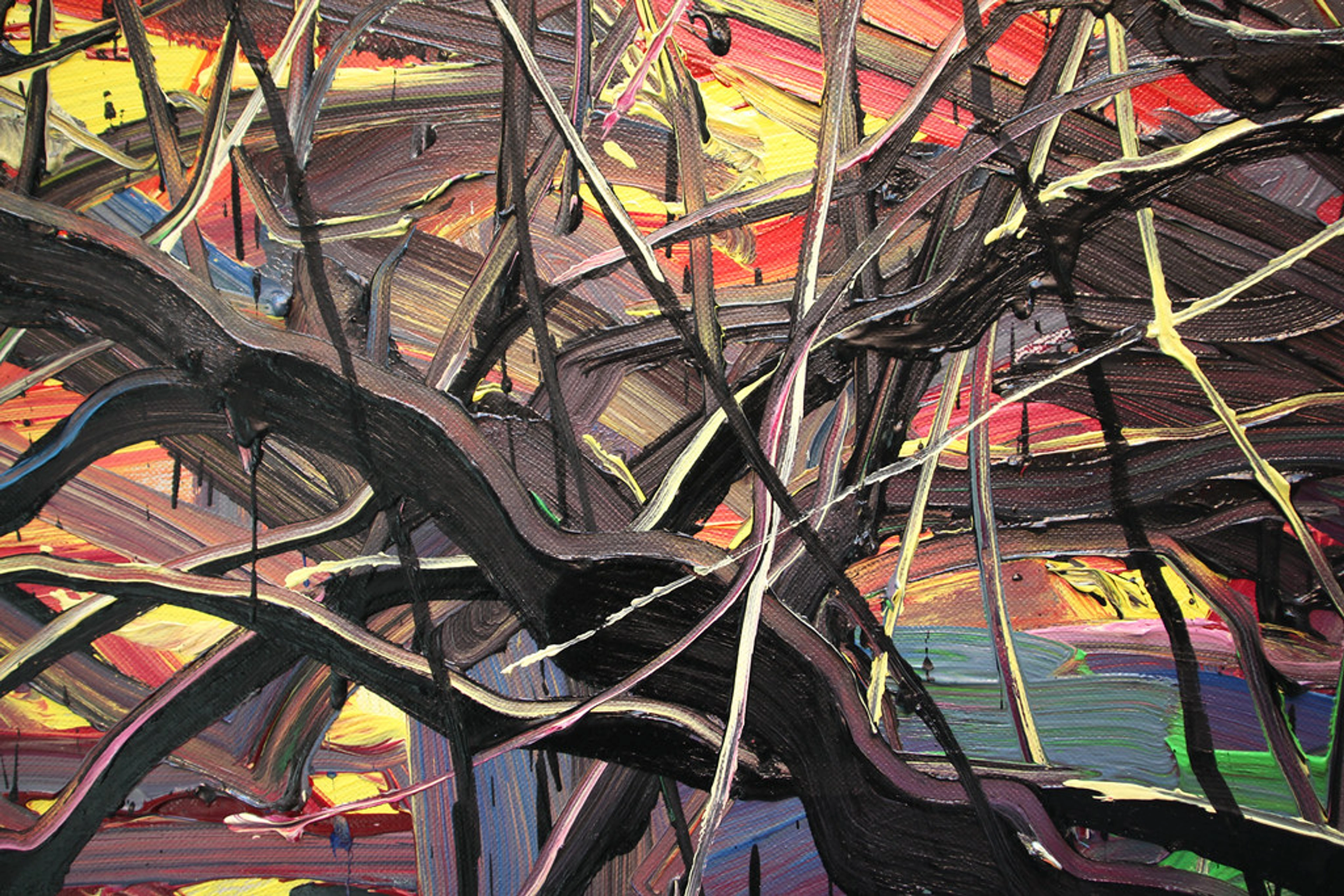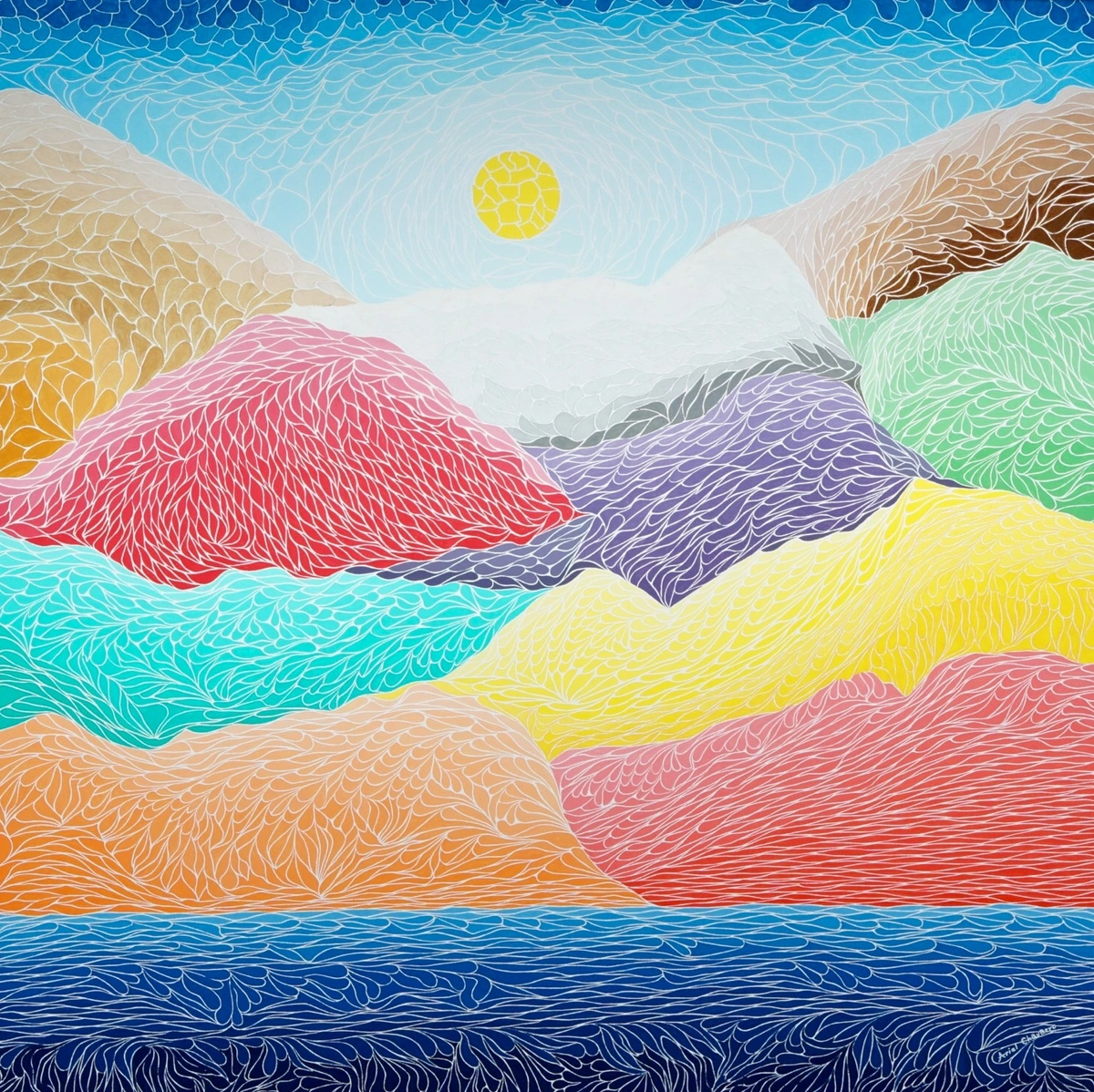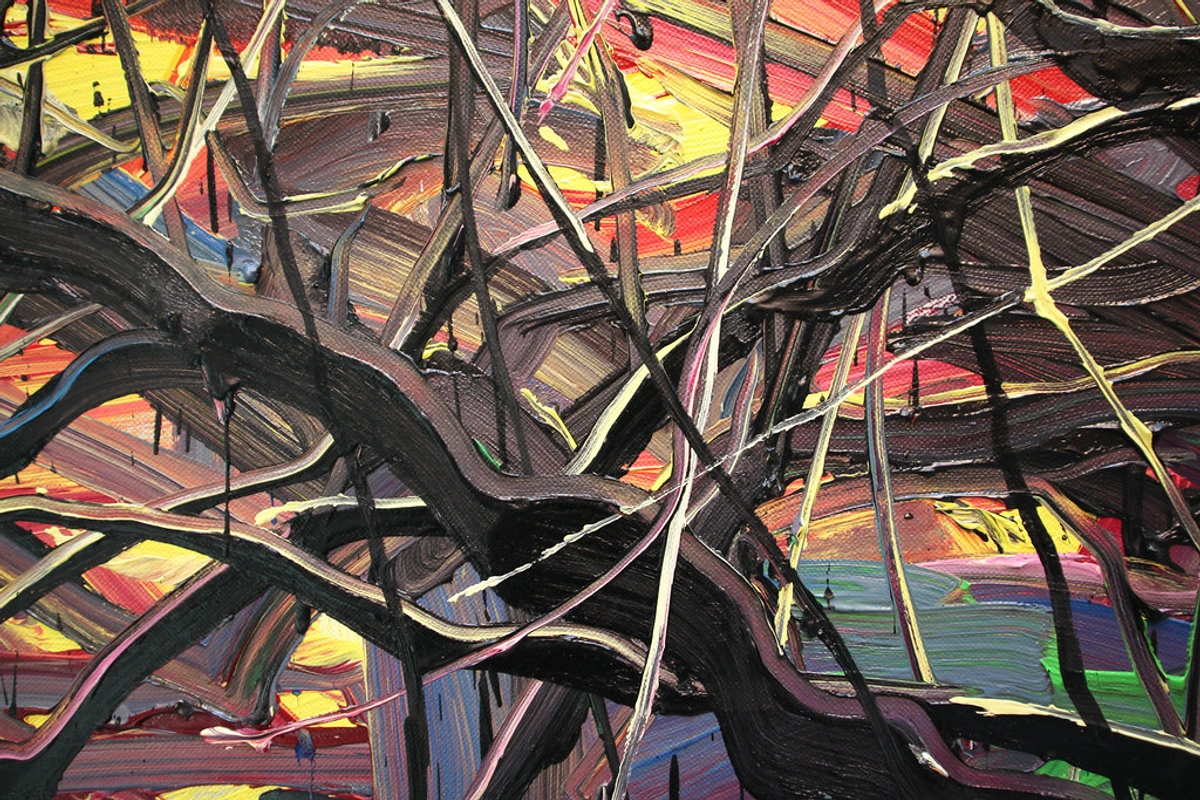
Helen Frankenthaler: Soak-Stain, Color Field & Abstract Art's Evolution
Explore Helen Frankenthaler's revolutionary soak-stain technique, her pivotal role in Abstract Expressionism & Color Field art, and her enduring legacy as an artistic innovator.
Ever wondered how a single canvas can hold the echo of a mountain, the rush of a tide, and the quiet whisper of a deeply personal emotion all at once?
Helen Frankenthaler: A Personal Journey into Color, Soak-Stain, and Artistic Liberation
Some artists don't just create; they unmake and remake the rules, carving out a space so unique it forever alters the landscape. Helen Frankenthaler is unequivocally one of them. For me, her work doesn't just hang on a wall; it seeps into your soul, defying the conventional idea of what painting should be, literally transforming the very surface of the canvas. Her canvases are vibrant conversations, echoes of imagined landscapes – not literal scenes, but the feeling of a vast horizon or a stormy sea – or raw bursts of emotion, where color itself becomes the language. It's a visual poetry born from audacious color and boundless artistic freedom. This daring exploration, this fearless push against conventional boundaries like the rigid primed canvas, reveals her profound connection to nature's rhythms and emotional depth, placing her at the very heart of modern abstraction. And in this journey, I want to explore how her intuitive genius fundamentally reshaped what abstract painting could be, offering a serene yet powerful alternative to the art world she inherited.
Born in New York City in 1928, Frankenthaler emerged into an art world dominated by the raw power of Abstract Expressionism. Yet, she found her own voice, a distinct approach that was both powerful and beautifully fluid. I remember the first time I really saw a Frankenthaler. It wasn't in a stuffy art history book, but rather online, a vibrant, flowing expanse of color that seemed to breathe. It made me pause, take a deep breath myself, and wonder, "How did she do that?" It's a feeling I try to capture in my own art – that moment of pure, unadulterated curiosity and connection. And it's this very question, "How did she do that?", that leads us into her revolutionary contribution to modern art: the soak-stain technique, which would reshape the landscape of abstract painting.
More Than Just "Stains": Unpacking Frankenthaler's Revolutionary Approach
A Breath of Fresh Air in Abstract Expressionism
Imagine walking into a room full of giants, all shouting their truths at the top of their lungs. That's essentially what the art world was like for Helen Frankenthaler in the 1950s, especially within the then-dominant movement of Abstract Expressionism. It was a tough crowd, mostly male, and their canvases were often monumental, intense, and, dare I say, sometimes a little intimidating. Think of Jackson Pollock's raw, energetic drips, Willem de Kooning's aggressive brushstrokes, or Mark Rothko's vibrating color blocks – powerful, certainly, but often grappling with weighty psychological themes like existential angst, the sublime, or the raw subconscious. For me, it sometimes felt like being at a very loud, very intense family dinner where everyone had something profound to say, and you just wanted to find your own quiet corner.
But Frankenthaler? She didn't try to out-muscle them. Instead, she found her own voice, a distinct approach that was both powerful and beautifully fluid. It reminds me a bit of trying to get your point across in a passionate debate – sometimes the quiet, unexpected insight is far more impactful than the loudest shout. She broke new ground, showing that abstract art could be both deeply emotional and incredibly graceful, carving out a lyrical space amidst the era's dominant masculine energy. It was a refreshing, almost defiant, act of artistic self-discovery.

The Genesis of the Soak-Stain Technique: A Paradigm Shift
This is where it gets really exciting, where the 'how did she do that?' really comes into play. Frankenthaler's most famous innovation is her soak-stain technique. Before her, artists typically painted on primed canvas – a surface treated with gesso or other sizing to prevent paint from soaking in too much, ensuring colors sat distinctly on the surface. But Frankenthaler, with a rebellious spirit I totally get (who likes following all the rules?), started pouring highly diluted oil paints, often thinned with turpentine, directly onto raw, unprimed canvas spread on the floor. It was a bold departure, an almost alchemical experiment.
The genius lies in the unprimed canvas. This raw, absorbent cotton duck canvas wasn't just a surface; it was an active participant, a giant blotter that allowed the thinned paint – often oil-based pigments heavily diluted with turpentine – to literally soak into its fibers. Turpentine, a volatile solvent, not only thinned the paint but also influenced its dispersion and drying time, allowing for those signature bleeding edges and translucent effects. This meant the paint wasn't just on the canvas, but became part of the canvas, its fibers absorbing the pigment so deeply that the weave itself became an integral element of the artwork. This fusion dissolved the illusion of painted depth, which was often achieved with traditional brushstrokes creating layers on the surface. Instead, she created luminous, translucent washes with soft, bleeding edges that often evoked landscapes or natural phenomena, though entirely abstract. It was less about the artist's aggressive gesture and more about the paint's natural flow and the canvas's absorption, a masterclass in letting the medium speak for itself, much like watching watercolors on wet paper, but on a grand, epic scale that enveloped the viewer. For someone like me who loves exploring how artists use color to evoke feeling, her method is pure genius.
Where the Canvas Becomes a Landscape: Frankenthaler and Color Field Painting
Frankenthaler's revolutionary soak-stain method wasn't just a personal innovation; it was the crucial bridge that allowed for the development of Color Field Painting. If Abstract Expressionism was about explosive gestures and raw emotion, Color Field painting, in large part thanks to Frankenthaler's technique, was about expansive, unbroken fields of color that enveloped the viewer. Think of it like this: one is a passionate, sometimes confrontational, argument; the other is a vast, silent, and deeply moving vista. The soak-stain technique allowed artists to create these monumental, seamless fields where color and canvas were inseparable, inviting a contemplative, almost spiritual experience rather than a confrontational one. This approach aligned with a philosophical shift towards the viewer's direct, phenomenological experience of color and space, rather than an interpretation of the artist's psyche.
I often find myself lost in her large-scale works, where the subtle shifts in hue and transparency create a sense of infinite space. It's like staring at the sky at sunset, or looking out over a vast ocean – there's a meditative quality, a quiet grandeur. While artists like Rothko also explored monumental color, Frankenthaler's approach had a unique organic fluidity, a sense of natural formation that was all her own. Unlike the precise, hard-edge, geometric shapes of a contemporary like Ellsworth Kelly, Frankenthaler's work revels in the seamless blending, like clouds dissolving into the horizon, celebrating the unpredictable beauty of liquid pigment as it bleeds and mixes directly into the fabric. It's truly a masterclass in letting the medium guide the message.

How do you experience vastness or quiet grandeur when looking at art? Does it require a different kind of looking?
Key Works and Why They Still Speak to Me
Though I can't show you images here (darn, sometimes I wish I had a magic wand for that!), let me paint a picture with words of some of her iconic pieces that showcase her evolution and mastery:
- Mountains and Sea (1952): This is often considered her breakthrough piece, a pivotal work in art history. Created after a trip to Nova Scotia, it's not a literal depiction, but rather an evocation of the landscape. The soft, luminous stains of pink, blue, green, and hints of ochre and lavender bleed into each other, creating an airy, almost watercolor-like effect on its expansive surface. Upon its exhibition, its monumental scale and radical technique immediately garnered attention from influential critics like Clement Greenberg and fellow artists, serving as a crucial bridge from the gestural intensity of Abstract Expressionism to the expansive serenity of Color Field painting. When I think of it, I feel a sense of calm, like a gentle breeze blowing through a memory, and it makes me wonder how she perfectly captured that fleeting moment.
- The Bay (1963): A gorgeous, bold blue shape dominates this canvas, seeming to float and expand. It's a single, monumental blue form that seems to simultaneously emerge from and dissolve into the surrounding canvas, its soft, yet intensely vibrant, edges suggesting the fluid boundary of a vast body of water, perhaps viewed from an impossible distance, like a bird's-eye dreamscape. The blue itself feels deep, almost opaque in its saturation, yet still luminous, as if sunlight is filtering through water. It's a testament to how she could convey immense scale and profound emotion with such elegant simplicity, making you feel the presence of a vast body of water without a single wave or horizon line.
- Canyon (1965): Here, you see a more structured, almost calligraphic use of the soak-stain. Darker, more defined shapes in earthy browns, deep reds, and slate grays emerge, creating a sense of geological formation, of deep chasms, layered strata, and soaring cliffs. It’s still fluid, but with a newfound gravity – a visual weightiness from more saturated pigments and distinct forms that suggest the immense, ancient forces of nature. This piece demonstrates her continued evolution as an artist, showing how her technique could be adapted to convey different emotional and structural narratives.
Each of these works, for me, isn't just a painting; it's an experience. They demand that you slow down, look closely, and let the colors wash over you. It's a wonderful antidote to our fast-paced world, if you ask me.
Which of Frankenthaler's works resonates most with your own sense of wonder or calm?
Helen Frankenthaler's Lasting Legacy: Echoes in Today's Art World
Helen Frankenthaler wasn't just a talented painter; she was a game-changer. Her fearless experimentation opened doors for countless artists who followed. She showed that abstraction didn't have to be rigid or aggressive; it could be lyrical, sensuous, and deeply personal. Early in her career, she was intimately connected to the Abstract Expressionist scene in New York. She encountered and learned from figures like Jackson Pollock and Willem de Kooning in their studios, and her innovative work was championed by influential critic Clement Greenberg. This exposure, combined with her innate vision, allowed her to forge a unique path, demonstrating an artistic authority that quickly gained significant critical recognition during her lifetime.
Her innovative spirit wasn't confined to her early breakthroughs. Throughout her extensive career, Frankenthaler continued to explore new possibilities, venturing into woodcuts, lithography, and ceramics, always pushing the boundaries of her chosen medium. In later periods, her work often evolved to include denser compositions, more structured forms, and a wider range of colors, demonstrating a continuous commitment to exploration beyond the initial soak-stain fluidity, always maintaining her distinctive personal touch. This relentless experimentation further solidified her reputation as a true game-changer.
Artists like Morris Louis and Kenneth Noland directly adopted and evolved her staining techniques. Louis, for instance, created his iconic "Unfurleds" by pouring thinned acrylics down raw canvas in sweeping, symmetrical columns, often leaving a vast central void. His application was more controlled and geometric than Frankenthaler's organic flows, resulting in sharply delineated veils of color. Kenneth Noland explored concentric circles and chevrons, saturating precise shapes into the fabric, creating a sense of flatness and optical vibration distinct from Frankenthaler's more atmospheric effects. Each artist adapted the stain technique to their unique geometric visions, pushing the boundaries of color and form that Frankenthaler first cracked open. Even artists who worked in different veins, like my fellow artist Frank Stella, were part of a generation that pushed boundaries, inspired by figures like Frankenthaler who dared to redefine painting itself.
Moreover, as a prominent woman artist in a historically male-dominated sphere, she proved that talent knows no gender. Her success paved the way, not just artistically, but culturally, for future generations of women to pursue their artistic ambitions with greater confidence. It’s a quiet revolution, but a revolution nonetheless, continuously inspiring artists to trust their own intuition and redefine what painting can be.

What artists do you see today who continue to challenge conventional boundaries in ways that echo Frankenthaler's spirit?
Further Exploration: Experiencing and Connecting with Frankenthaler's Vision
Frankenthaler's journey wasn't just about painting; it was about living a life of artistic conviction, rooted in an artistic philosophy that emphasized intuition, spontaneity, and the expressive power of color. She often drew inspiration directly from nature – landscapes, seascapes, and geological formations – translating these observations into abstract forms and profound emotional states through her unique staining process. Her fearless experimentation, her quiet revolution as a prominent woman artist in a historically male-dominated field, and her enduring spirit of innovation continue to inspire generations. She taught us that abstraction could be lyrical, sensuous, deeply personal, and profoundly authoritative all at once. Her legacy reminds me that true artistry often lies in breaking the mold, in finding your own way, even when the path isn't clear, and that the most profound expressions often come from the deepest personal conviction. It's a lesson I constantly try to apply to my own creative journey, seeking that same balance of intuition and authority in my art for sale.
If her exploration of color and emotion resonates with your own artistic sensibilities, I invite you to explore my creative journey and art at my museum in 's-Hertogenbosch or through my artist timeline. Who knows, perhaps it will spark your own journey into the boundless world of abstract art, much like Helen Frankenthaler did for me! To truly experience her genius and the monumental scale of her works, seek out her pieces in major museums worldwide. From the Museum of Modern Art (MoMA) in New York to the Tate Modern in London, her work is celebrated globally. A quick search for her name in your local major museum's collection or on their website is a great starting point – they demand you slow down, look closely, and let the colors wash over you. It’s a wonderful antidote to our fast-paced world.
FAQs About Helen Frankenthaler
Here are some common questions about this incredible artist:
Question | Answer |
|---|---|
| What is Helen Frankenthaler known for? | Helen Frankenthaler is primarily known for her pioneering role in Abstract Expressionism and Color Field Painting, especially for inventing the soak-stain technique, where she poured diluted paint onto unprimed canvas, creating expansive, luminous color fields. |
| What technique did Helen Frankenthaler use? | She developed the soak-stain technique, involving pouring highly thinned oil paints (often with turpentine) onto raw, unprimed canvas, allowing the colors to seep into the fabric and create luminous, translucent washes with soft, bleeding edges. |
| What types of materials did Helen Frankenthaler use? | She primarily used thinned oil paints, often diluted with turpentine, on raw, unprimed cotton duck canvas. She also later experimented with acrylics, and extensively explored printmaking mediums such as woodcuts, lithography, and ceramics. |
| How did Helen Frankenthaler influence art? | Her innovative soak-stain technique bridged Abstract Expressionism and Color Field Painting, inspiring a new generation of artists (like Morris Louis and Kenneth Noland) to explore stain painting. Her work, characterized by its intuitive fluidity and monumental scale, also solidified her place as a significant female artist in a male-dominated movement, paving the way for others. |
| Is Helen Frankenthaler an Abstract Expressionist or Color Field painter? | She is considered a pivotal figure in both movements. Her early work emerged from Abstract Expressionism, and her unique technique was instrumental in the transition to and development of Color Field painting, effectively linking the two. |
| What was Helen Frankenthaler's artistic philosophy or source of inspiration? | Frankenthaler believed in the autonomy of the painting and the expressive power of color. She drew deep inspiration from nature – landscapes, seascapes, and geological formations – translating these observations into abstract forms and emotional states through her unique staining process. Her philosophy emphasized intuition, spontaneity, and a profound trust in the medium to convey her inner vision. |
Have other questions about Helen Frankenthaler or abstract art? Share them in the comments below!
My Final Thoughts on Frankenthaler: A True Original
When I look at Helen Frankenthaler's work, I don't just see paintings; I see an invitation. An invitation to freedom, to intuition, and to the profound possibilities that emerge when you dare to trust your own vision. She didn't just paint pictures; she painted possibilities. She dared to be different, to trust her intuition, and in doing so, she carved out a unique and unforgettable space in art history, not only for her revolutionary technique but for her enduring spirit of innovation and her quiet but powerful authority. Her legacy reminds me that true artistry often lies in breaking the mold, in finding your own way, even when the path isn't clear, and that the most profound expressions often come from the deepest personal conviction. It's a lesson I constantly try to apply to my own creative journey, striving to find that unique resonance in every canvas. Here's to the artists who show us how to truly see, how to truly feel, and how to continually redefine the boundaries of what art can be. Here's to Helen, a true original whose vibrant spirit continues to inspire and challenge.




